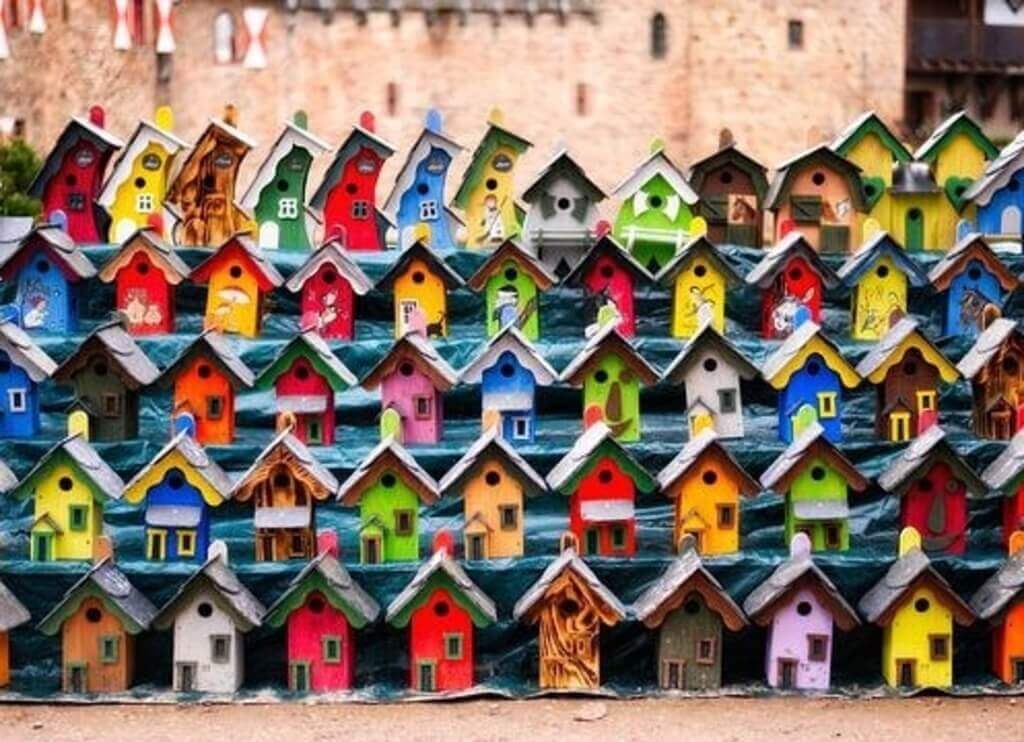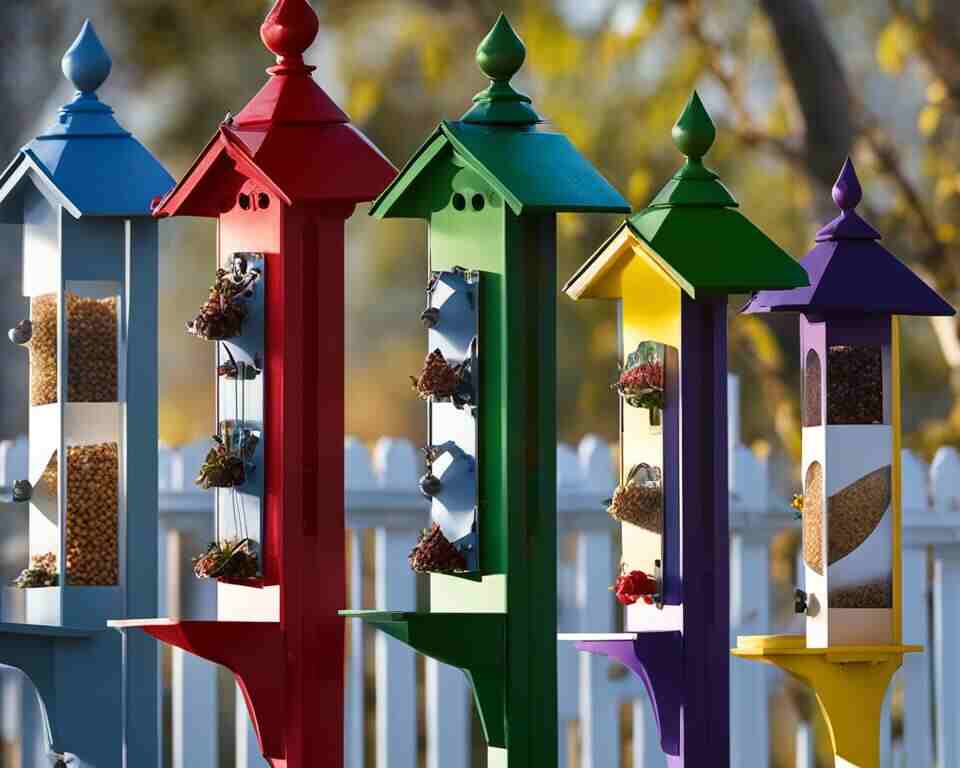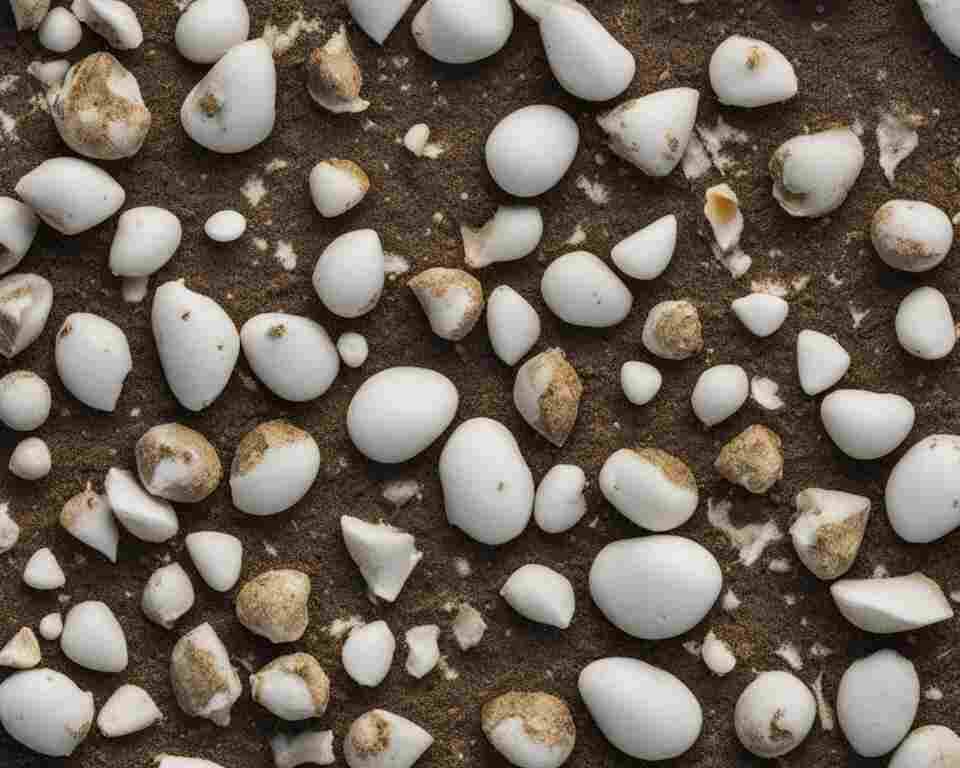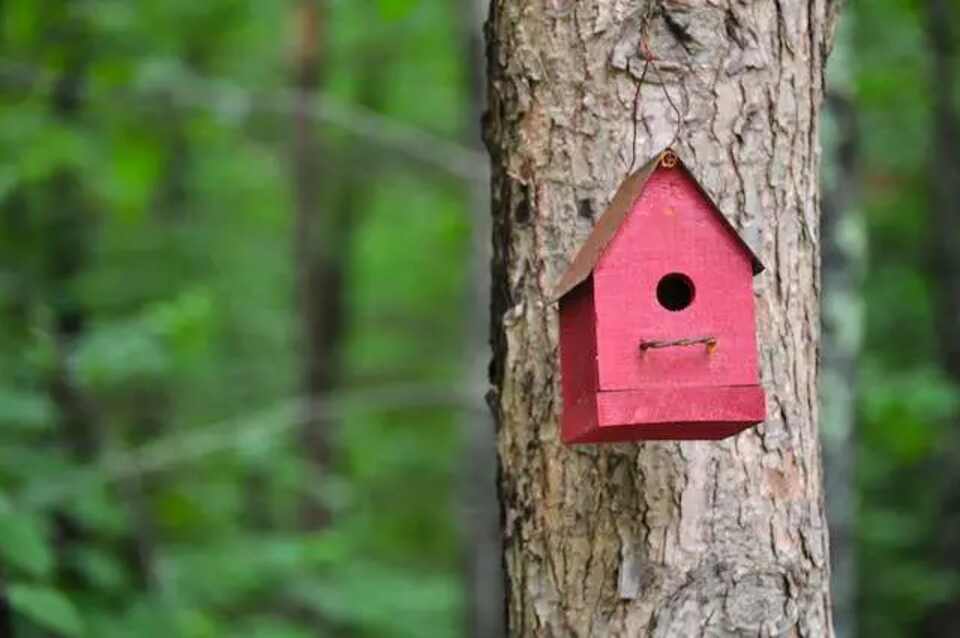When it comes to the vibrant world of birds, their visual perception and color preferences have always fascinated researchers. Do birds have specific attractions to certain colors? Can their color vision unlock the secret of their behavior? Let’s delve into the fascinating world of avian visual perception and explore the factors that influence bird color attraction.
Table of Contents
- 1 Key Takeaways:
- 2 Are Birds Attracted To Certain Colors?
- 3 How Different Colors Impact Birds’ Behavior
- 4 Birds’ Color Preferences and Attraction
- 5 Bird Color Preference: Attracting Birds with the Right Colors
- 6 Car Colors Most Pooped on by Birds
- 7 Bird Poop as a Good Luck Charm
- 8 Bird Poop Composition: Understanding Why it’s White
- 9 Birdwatching and Color Preference
- 10 Bird Color Perception and Evolution
- 11 Creating Bird-Friendly Environments Through Color Choices
- 12 Conclusion
- 13 FAQs
- 13.1 How do different colors impact birds’ behavior?
- 13.2 What colors do birds generally avoid?
- 13.3 What colors attract birds?
- 13.4 Which car colors are most targeted by birds for droppings?
- 13.5 Is bird poop considered a good luck charm?
- 13.6 Why is most bird poop white?
- 13.7 How can colors impact birdwatching and conservation?
- 13.8 How does color perception evolve in birds?
- 13.9 How can color choices create bird-friendly environments?
- 13.10 What can we learn from bird color perception and evolution?
- 14 Source Links
- 15 Author
Key Takeaways:
- Birds have enhanced color vision and can perceive ultraviolet (UV) colors that are invisible to human eyes.
- Hummingbirds, in particular, are attracted to UV colors, which are abundant in nature.
- Colors play a significant role in bird behavior, with bright and bold colors often signaling danger or inedible objects.
- Earth tones like green and brown blend well with nature and evoke a sense of safety for birds.
- Understanding bird color preferences can help attract and conserve different bird species.
Are Birds Attracted To Certain Colors?
Birds are attracted to certain colors based on their natural instincts and preferences. While bright and bold colors like red, yellow, pink, orange, and purple are generally avoided by birds, they are drawn to earthy tones like green and brown that blend well with nature. Some bird species may have individual color preferences, with blue often symbolizing safety and tranquility.
Understanding these color preferences is crucial in creating bird-friendly environments and attracting specific bird species. By incorporating colors that birds find appealing, we can enhance their experience and increase the chances of attracting them to our surroundings.
How Different Colors Impact Birds’ Behavior
Different colors have a significant impact on birds’ behavior and preferences. Birds are generally attracted to certain colors while avoiding others. Understanding these color preferences can be crucial in attracting specific bird species and creating bird-friendly environments.
Bright and bold colors, such as red, yellow, pink, orange, and purple, are generally avoided by birds. These vibrant colors can signal danger or represent poisonous or inedible objects in the natural world. On the other hand, earthy tones like green and brown blend well with nature and evoke a sense of safety for birds.
While birds have individual color preferences, some species are attracted to specific colors like blue or yellow. Blue, in particular, symbolizes safety and tranquility for birds and is often perceived positively. By understanding the color preferences of different bird species, it is possible to create environments that cater to their needs and increase the chances of attracting them.
| Colors Birds Generally Avoid | Colors that Attract Birds |
|---|---|
| Red | Blue |
| Yellow and White | Green |
| Pink | Brown |
| Orange | Yellow |
| Purple |
Table: Colors that birds generally avoid and colors that attract birds
As birds have keen eyesight and can detect subtle differences in colors, using natural-looking bird feeders, habitats, and landscaping techniques with muted tones and earthy colors can attract a wider range of birds. By understanding the impact of different colors on bird behavior, we can create bird-friendly spaces that benefit both the birds and our own enjoyment of birdwatching.
Birds’ Color Preferences and Attraction
When it comes to attracting birds, understanding their color preferences can be crucial. Different colors have varying impacts on bird behavior, and certain colors can either attract or discourage them. Birds tend to avoid bright and bold colors such as red, yellow, pink, orange, and purple.
These vibrant colors can signal danger or represent poisonous objects in the natural world. Instead, birds are drawn to earthy tones like green and brown that blend well with nature and evoke a sense of safety.
Birds have individual color preferences, and some species are attracted to specific colors like blue or yellow. While blue is generally perceived as a safe and tranquil color, yellow can resemble the color of venomous insects or snakes, making it less appealing to birds.
It’s important to note that color preferences may vary depending on the bird species and their specific ecological needs. To attract a wider range of birds, using natural-looking bird feeders or creating habitats with muted tones and earthy colors can be more effective.
To further understand bird color preferences and attraction, researchers have conducted studies to uncover which colors birds generally avoid. Bright and bold shades of red, yellow, pink, orange, and purple are often avoided by birds due to their association with danger or artificiality.
Additionally, violet and dull brown colors, which are less commonly found in the natural environment, are also typically avoided by birds. By taking these color preferences into consideration, individuals can create bird-friendly environments that both attract and protect native bird populations.
Table: Colors That Birds Tend to Avoid
| Color | Reason for Avoidance |
|---|---|
| Red | Resembles ripe fruit or berries, attracting predators |
| Yellow | Resembles venomous or inedible insects and snakes; may attract harmful wasps and bees |
| Pink | Appears artificial and unnatural in their surroundings |
| Orange | Similar to pink, appears artificial and unnatural in their surroundings |
| Purple | Not commonly found in their natural environment |
| Dull brown | Less commonly found in their natural environment |
Bird Color Preference: Attracting Birds with the Right Colors
When it comes to attracting birds, understanding their color preferences is key. Birds have unique visual perception and are attracted to specific colors that evoke safety, tranquility, and natural environments. By incorporating these colors into bird feeders, habitats, and landscaping, you can create bird-friendly spaces that attract a wide range of bird species.
One color that consistently attracts birds is blue. Blue shades symbolize safety and serenity, making them highly appealing to many bird species. Additionally, green and brown tones, which blend well with nature, provide a sense of security for birds and attract them to your surroundings.
Creating Bird-Friendly Colors
In order to attract a diverse bird population, it’s important to consider individual species’ color preferences. Some birds are specifically attracted to colors like yellow or beige, so incorporating these hues into your bird-friendly spaces can enhance their appeal.
However, it’s important to note that birds have keen eyesight and can detect subtle differences in colors, so using natural-looking designs with muted tones and earthy colors is generally recommended for creating bird-friendly environments.
Table: Color Preferences of Popular Bird Species
| Bird Species | Color Preferences |
|---|---|
| Blue Jay | Blue, black, white |
| Cardinal | Red |
| Goldfinch | Yellow |
| Hummingbird | Bright red, orange, pink |
| Woodpecker | Black, white, red |
By catering to specific bird species’ color preferences, you can maximize the attractiveness of your bird feeders and gardens. This not only enhances your birdwatching experience but also contributes to bird conservation efforts by providing suitable habitats and food sources for different bird populations.
Overall, understanding bird color preference is an essential aspect of creating bird-friendly environments. By incorporating the right colors into your bird feeders, habitats, and landscaping, you can attract a diverse range of bird species and contribute to their conservation.
Car Colors Most Pooped on by Birds
When it comes to bird droppings on cars, there seems to be a preference for certain car colors. A study conducted in England revealed that red cars are the most likely target of bird poop, followed by blue and black cars. On the other hand, green cars are the least likely to be targeted.
While the exact reason behind this color preference is not fully understood, it is believed that birds might perceive these colors differently or associate them with objects in their natural environment.
This color preference of birds can be a concern for car owners, as bird droppings can be unsightly and may damage the paintwork if not cleaned promptly. It is advisable to be cautious when parking cars, especially if you own a red, blue, or black car.
Consider parking in covered areas or using car covers to minimize the risk of bird droppings. However, it is worth noting that even cars of less preferred colors can still be targeted, so regular cleaning and maintenance are essential.
If you are in the market for a new car or considering a color change, you might want to take this bird poop color preference into account. Opting for a car in a color less attractive to birds, such as white or green, may reduce the chances of becoming a target for bird droppings.
While it may not guarantee complete protection, it could potentially lessen the frequency of encountering this avian inconvenience.
| Car Color | Frequency of Bird Droppings |
|---|---|
| Red | High |
| Blue | Moderate |
| Black | Moderate |
| Green | Low |
Remember, bird droppings on cars are not just an inconvenience, but they can also damage the paintwork if left untreated due to their acidic nature. Regular cleaning and maintenance can help protect your car’s appearance and minimize potential damage caused by bird droppings.
Bird Poop as a Good Luck Charm
It may seem strange, but there is a long-standing superstition that bird poop brings good luck. According to this belief, if a bird happens to poop on you, your car, or your property, it is considered a sign of good fortune and prosperity.
In fact, the more birds involved in the incident, the more luck and wealth you are said to receive. While this superstition may sound unusual to some, many people around the world embrace it and see bird droppings as a positive omen.
However, not everyone shares this belief, and for many, bird poop is simply an inconvenient mess that needs to be cleaned up. Bird droppings can be a nuisance and may require extra effort to maintain the appearance and cleanliness of your car or property.
It is essential to strike a balance between superstitions and practicality, acknowledging the cultural significance while also addressing the inconvenience that bird droppings can cause.
Superstitions about bird poop
“Finding bird poop on your car or property is considered to bring good luck and prosperity.”
While superstitions can vary across cultures and individuals, the belief in bird poop as a good luck charm remains prevalent in many parts of the world. So the next time a bird decides to leave its mark, you can choose to interpret it as a stroke of luck or simply as a reminder of the fascinating and interconnected world we share with our feathered friends.
Bird Poop Composition: Understanding Why it’s White
Have you ever wondered why bird poop is white? The composition of bird poop is quite different from other types of animal waste. Instead of containing urine, like mammals, birds excrete nitrogenous wastes in the form of uric acid. This uric acid is what gives bird droppings their distinctive white color.
Unlike mammals, birds don’t produce liquid urine. Instead, their kidneys extract nitrogenous waste from their bloodstream and combine it with uric acid, which is then excreted as a white paste. Uric acid is a solid compound that doesn’t dissolve easily in water, so when birds poop, the uric acid forms the white color that we commonly associate with bird droppings.
Understanding the composition of bird poop can help explain why it’s predominantly white. The absence of liquid urine and the presence of uric acid contribute to the unique appearance of bird droppings. So, the next time you see a white splatter on your car or property, you’ll know that it’s just a result of a bird’s excretion process.
| Component | Percentage |
|---|---|
| Uric Acid | 45% |
| Water | 30% |
| Ammonia | 10% |
| Other Organic Matter | 10% |
| Pigments | 5% |
Table: Composition of Bird Poop
Birdwatching and Color Preference
Birdwatching is a popular hobby for nature enthusiasts and bird lovers. It provides an opportunity to observe and appreciate the diverse beauty of avian species.
When it comes to birdwatching, understanding the color preferences of birds can be beneficial in attracting them and creating bird-friendly environments.
By incorporating bird-friendly colors into our surroundings, we can enhance the birdwatching experience and contribute to bird conservation efforts.
Bird-friendly colors are those that mimic the natural hues found in birds’ habitats. These colors, such as shades of blue and earth tones like green and brown, create a sense of safety and familiarity for birds.
Using natural-looking bird feeders, birdhouses, and garden decorations in these colors can help attract a wider range of bird species. Landscaping techniques that incorporate suitable hues and provide food sources, shelter, and nesting areas can also play a significant role in bird attraction and conservation.
Researching the color preferences of different bird species is crucial in setting up attractive feeders or gardens that cater to specific birds. Some birds may be more attracted to specific colors like blue or yellow, while others may prefer a combination of earthy tones.
By understanding the psychology of color attraction in birds, we can create harmonious bird-friendly spaces that benefit both birds and humans.
Bird Conservation Through Color Choices
Color choices have a direct impact on bird conservation efforts. Birds have evolved to perceive and respond to different colors, which play a crucial role in their behavior and attraction. By avoiding potentially harmful colors and using bird-friendly colors in our surroundings, we can attract and protect native bird populations.
“Creating a harmonious balance between human environments and the natural world can benefit both birds and humans alike.”
Conservation efforts can be supported by incorporating bird-friendly colors into urban landscapes, architecture, and infrastructure. For example, using bird-friendly glass that incorporates patterns visible to birds, such as UV reflections or visual cues, can help prevent collisions and protect bird populations.
Building designs, such as green roofs and vertical gardens, can provide additional food sources and nesting opportunities for birds.
By considering the color preferences of birds and promoting bird-friendly color choices, we can play a crucial role in bird conservation and contribute to the preservation of avian species for future generations.
Bird Color Perception and Evolution
Bird color perception is a fascinating aspect of avian biology. Birds have evolved to possess a sophisticated visual system that enables them to perceive a wide range of colors. They have four types of cones in their eyes, including one that is sensitive to ultraviolet (UV) light.
This unique ability allows birds to see colors that are invisible to the human eye. UV colors are abundant in nature, and their perception helps birds identify food sources, mates, and communicate with other birds.
The evolutionary roots of avian color vision can be traced back to their dinosaur ancestors. Ancient birds, like their modern counterparts, would have benefitted from the ability to perceive colors in their environment.
Over millions of years, the avian visual system has continued to evolve, refining their color perception and enabling them to thrive in various habitats.
The ability to perceive and respond to different colors has deep evolutionary roots in birds and is likely to have been present in their dinosaur ancestors.
The impact of color on bird behavior is multifaceted. Different bird species have individual color preferences, and certain colors can elicit specific behaviors. For example, bright and bold colors such as red, yellow, and orange are often associated with danger or inedibility in the natural world, and birds tend to avoid them.
On the other hand, colors like blue and green are perceived positively by many bird species, symbolizing safety and favorable conditions. Understanding how colors influence bird behavior can help in creating bird-friendly environments and attracting specific bird species to our surroundings.
| Bird Color Perception | Evolutionary Roots | Color Impact on Bird Behavior |
|---|---|---|
| Birds have four types of cones in their eyes, including UV-sensitive cones. | Avian color vision likely evolved from dinosaur ancestors. | Different colors can elicit specific behaviors in birds. |
| They can perceive a wider range of colors, including UV colors. | The ability to perceive colors assists in foraging, communication, and mate selection. | Bright and bold colors can signal danger, while blue and green evoke a sense of safety. |
| Color perception aids in identifying food sources, mates, and communicating with other birds. | The avian visual system has evolved over millions of years. | Understanding color preferences can help in creating bird-friendly environments. |
By studying bird color perception and its evolutionary roots, we gain valuable insights into bird behavior and their interactions with their environment. This knowledge can be applied to conservation efforts, as understanding the colors that birds are attracted to can help in creating bird-friendly spaces and habitats.
By incorporating bird-friendly colors and design elements into our surroundings, we can enhance birdwatching experiences and contribute to the preservation of avian populations.
Creating Bird-Friendly Environments Through Color Choices
Attracting birds with color is an effective way to create bird-friendly spaces in our surroundings. By understanding the psychology of color attraction in birds, we can make informed choices when it comes to landscaping and incorporating suitable hues.
Natural-looking designs with muted tones and earthy colors, such as greens and browns, blend seamlessly into the environment and provide a sense of safety for birds.
A key aspect of creating bird-friendly environments is the use of bird feeders, birdhouses, and garden decorations that feature colors that attract birds. Blue, in particular, is a color that birds find attractive and associate with safety and tranquility.
Incorporating blue shades in these elements can help in attracting a wider range of bird species to our gardens and yards.
In addition to color choices, landscaping techniques can further enhance bird attraction. Planting native vegetation and incorporating a variety of plants that provide food sources, shelter, and nesting areas can significantly contribute to creating bird-friendly spaces.
These plants can be selected based on their colors, ensuring that they appeal to different bird species and provide a diverse and visually engaging landscape.
Table:
| Bird-Friendly Colors | Avoided Colors |
|---|---|
| Blue | Red |
| Green | Yellow |
| Brown | Pink |
“Using bird-friendly colors and creating bird-friendly environments can not only attract a greater variety of bird species but also contribute to their conservation. By providing birds with a safe and welcoming habitat, we can ensure their continued presence and enjoyment for future generations.” – Bird Conservationist
By incorporating bird-friendly colors in our surroundings and adopting bird-friendly landscaping techniques, we can actively contribute to the conservation of bird populations.
The careful selection of colors that attract birds, along with the provision of suitable habitats and food sources, creates an inviting environment that supports and sustains bird populations.
These small yet impactful choices can make a significant difference in promoting avian biodiversity and enhancing the birdwatching experience.
Conclusion
Understanding the fascinating relationship between birds and colors is crucial in attracting and conserving bird populations. Birds have specific color preferences and are naturally drawn to certain colors while avoiding others. By leveraging this knowledge and using bird-friendly colors, we can create environments that attract a diverse range of avian species.
Through conscious color choices in our surroundings, such as incorporating blue and earth tones, we can enhance birdwatching experiences and contribute to bird conservation efforts. Creating bird-friendly spaces with natural-looking designs and muted tones can provide birds with a sense of safety and encourage their presence.
Colors play a significant role in bird perception and behavior, shaping their visual world and influencing their attraction to certain habitats. Ongoing research in bird color attraction theory and avian vision continues to deepen our understanding of these complex interactions. By striking a harmonious balance between human environments and the natural world, we can support the well-being of both birds and ourselves.
By embracing the power of color and making informed choices, we can create a colorful world that not only enriches our own lives but also safeguards the precious avian species that share it with us.
FAQs
How do different colors impact birds’ behavior?
Different colors can have different impacts on bird behavior. Bright colors may attract some bird species while duller colors may discourage them.
What colors do birds generally avoid?
Birds generally avoid bright and bold colors such as red, yellow, pink, orange, and purple. These colors can signal danger or represent poisonous or inedible objects in the natural world.
What colors attract birds?
Birds are generally attracted to colors like blue and earth tones, which symbolize safety and blend well with nature. Some bird species have specific preferences for colors like yellow or beige.
Which car colors are most targeted by birds for droppings?
Research has found that red cars are the most likely target of bird poop, followed by blue and black cars. Green cars are the least likely to be targeted.
Is bird poop considered a good luck charm?
Some people believe that bird poop brings good luck and prosperity. However, if you find bird poop to be inconvenient, you are not alone.
Why is most bird poop white?
Birds excrete nitrogenous wastes in the form of uric acid, which appears as a white paste. Uric acid does not dissolve easily in water, resulting in the white color of bird droppings.
How can colors impact birdwatching and conservation?
Understanding bird color preferences can help in creating bird-friendly environments and attracting and conserving bird populations.
How does color perception evolve in birds?
Birds have evolved enhanced color vision to suit their ecological needs. They have four types of cones in their eyes, allowing them to perceive a wider range of colors than humans.
How can color choices create bird-friendly environments?
Using bird-friendly colors in bird feeders, habitats, and landscaping can attract a wider range of bird species and contribute to bird conservation efforts.
What can we learn from bird color perception and evolution?
Understanding bird color perception and its evolution can provide insights into bird behavior and ecological interactions.






